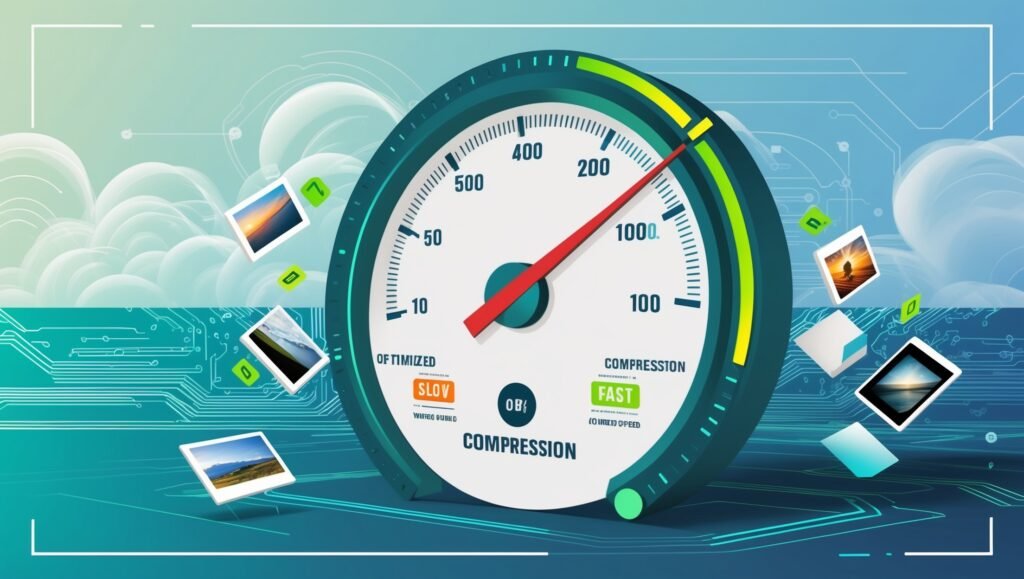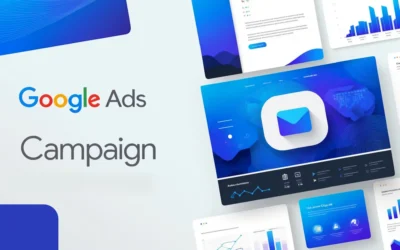How to get a Perfect Score!

A Perfect Score For Your Website
Unlocking a perfect score for your website on PageSpeed and sites like GTmetrix is indeed possible! The Holy Grail of website optimisation is to get your site rated as 100% across the board. Sites like Pingdom Website Speed Test and GTmetrix will test your site and give you a report on how it performs. Not only this, but they will also give you insights into why your site performs badly and how you can improve its performance.
Sites like these are usually free to use, although you may be limited in how many tests you can run in 24 hours. They are an essential tool in fine-tuning your site. This is important if you want Google and Bing to rank your site highly.
Factors affecting your site’s ranking:
Many factors affect your site’s ranking. The speed of loading is an important one.
If you look at the screenshot above, you will see that the site Littleborough Lakeside is scoring 100% and has an impressive score for loading with no blocking time penalties and no cumulative layout shift.
If you would like to achieve a similar score, then why not use the Contact form to request an initial free audit of your site?
The Importance of a Top-Notch Website
In today’s digital age, your website is your business’s virtual storefront. It’s often the first impression potential customers get of your brand. Thus, having a stellar website is crucial for success.
Why Website Performance Matters
A slow or poorly designed website can be a real turn-off for visitors. It might send them running to your competitors. On the other hand, a fast, well-designed site can boost your brand image and keep visitors engaged.

Key Factors for Optimal Website Performance
To get your website in tip-top shape, you need to focus on several areas. These include:
- Image optimisation
- Code compression
- Choosing the right hosting provider
Each of these plays a vital role in creating a smooth user experience.
Understanding Website Performance Metrics
Performance metrics are vital for gauging how well your website is doing. These measures help you spot weak areas and track changes over time. Moreover, they allow you to set goals for improvement.
Comparing Your Site to Competitors
A perfect score for your site involves checking your competitors’ sites. This comparison helps you understand if you’re meeting industry standards. If not, you’ll know where to focus your efforts.
The Importance of Page Speed:
Why Speed Matters
In our fast-paced world, people want quick results. This applies to websites too. A slow site can frustrate visitors and hurt your search engine rankings.
The Three-Second Rule
Aim to have your pages load in three seconds or less. Any longer, and you risk losing impatient visitors. They might click away and never return.
Consequences of Slow Loading
If your site is slow, it’s not just annoying for users. It can also harm your business. People may leave before they see what you offer. This could mean lost sales or missed opportunities.
Understanding Bounce Rate:
Bounce rate is a key metric for website owners. It shows how many visitors leave a page quickly without doing anything else. This number can tell you a lot about your site’s effectiveness.
What a High Bounce Rate Means
If your bounce rate is high, it could point to some problems. These might include:
- Content that doesn’t match what visitors expect
- A design that’s hard to use or understand
Aiming for a Lower Bounce Rate
To keep visitors on your site longer, try these tips:
- Make sure your content is relevant
- Design pages that are easy to navigate
Steps to Perfect Website Performance:
Start with a Thorough Analysis
To get top marks for your site, you need to look at how it’s doing now. This means checking things like:
- How fast your pages load
- How many people leave quickly (bounce rate)
Use Your Findings:
Once you know how your site is doing, you can make a plan. This plan should focus on making your site work better overall.
Stay Ahead of the Competition
By improving your site based on these metrics, you can outperform your rivals. This could lead to more visitors, sales, or whatever success means for your website.
Analysing Your Website’s Current Performance
To get top marks for your website, you first need to check how it’s doing now. This means looking at its speed and efficiency. By doing this, you can find what’s slowing your site down.
The Benefits of Website Analysis
Checking your site’s performance isn’t just about speed. It can also make things better for your users. When pages load faster, people enjoy using your site more.
Why Speed Matters:
A faster website is a winner all around. It makes users happy and helps your site rank better in search results.
Tips for Speeding Up Your Site
Here are some ways to make your site zippier:
- Use caching plugins
- Cut down on HTTP requests
- Load fewer files on each page
These simple steps can make a big difference to your loading times.
Looking Beyond the Basics:
To improve your site, you need to dig deeper. It’s not just about tweaking code or shrinking files.
What to Check
Look at things like:
- How quickly your server responds
- How your database handles queries
The Payoff
By sorting out these issues, you’ll give users a smoother experience. Plus, your site might climb up the search rankings too!
Remember to do these:
- Enhance the user experience by minimising load times#
- Use caching plugins to increase efficiency
- Reduce HTTP requests to optimise speed
- Address server response times to eliminate bottlenecks
- Optimise images and media files to enhance performance
As we move forward into optimising images and media files, it is important first to understand how they impact your site’s overall performance.
While high-quality visuals are necessary for enhancing user engagement, large file sizes can severely slow down page load times.
Therefore, it is vital to balance between image quality and size when optimising them for increased efficiency.
Optimising Images and Media Files:

Improving your website’s images and media files is key to top performance. This process can speed up your pages and make users happier.
The Power of Image Compression
Image compression shrinks file sizes without ruining quality. Smaller files mean faster loading times. This leads to a better experience for your visitors.
Choosing the Right Image Format:
Common Image Formats
There are several image formats to choose from:
- JPEG: Great for photos
- PNG: Best for graphics needing transparency
- GIF: Good for simple animations
The New Kid on the Block: WebP
WebP is a newer format that offers even smaller file sizes. Using it can speed up your site and boost your search rankings.
Why File Size Matters
Bigger files take longer to load. This can slow down your whole website. It’s crucial to keep your media files as small as possible.
Tools for Shrinking Files
You can use online tools to make your files smaller:
- TinyPNG
- Adobe Photoshop
These tools can compress your images before you add them to your site.Remember, smaller files don’t have to mean lower quality. With the right approach, you can have fast-loading, great-looking images on your site.
Minimising HTTP Requests
As we have covered the importance of optimising images and media files, it’s time to move on to another crucial factor that affects website performance: minimizing HTTP requests. One way to achieve this is by reducing bandwidth usage by combining resources. By bundling CSS and JavaScript files, for example, you can decrease the number of HTTP requests made by your website.
Improving loading speed is not only important from a user experience perspective but also plays a significant role in search engine optimisation. Streamlining design elements such as fonts, graphics, and widgets enables faster page rendering times. Additionally, removing unnecessary plugins or features further reduces HTTP requests and improves site performance.
Enhancing user experience should be at the forefront of any website owner’s priorities. Enabling browser caching is one effective technique for achieving this goal. Caching allows web pages to load more quickly upon subsequent visits since previously loaded resources are stored locally on users’ devices. In turn, this can lead to increased engagement with your content and higher conversion rates overall.
Enabling Browser Caching
Enabling browser caching is a crucial step to ensure your website’s optimal performance. According to a recent study, websites that enable caching can reduce load times by up to 80%. This means users have faster access to content and are more likely to stay on the site longer.
One of the benefits of caching is setting cache expiration. This allows you to control how long certain resources remain in the cache before being refreshed. By specifying an appropriate time frame for each resource, you can improve page load times and reduce server requests.
Cache-control directives:
Cache-control directives also play an important role in handling cache conflicts. These directives specify how browsers should handle cached resources when multiple copies exist or when there are changes made on the server side. Proper use of these directives helps ensure that your website is always displaying accurate and up-to-date information while avoiding unnecessary traffic.
Caching isn’t just for static files, either – dynamic content can be cached as well. By selectively caching frequently accessed data like comments or search results, you can further optimise the user experience without sacrificing functionality. In the next section, we’ll explore another way to enhance website performance: compressing your website’s files.
Compressing Your Website’s Files
When it comes to website performance, compressing your files is an essential step for ensuring faster load times. However, not all file types should be compressed equally. Images and videos tend to have larger sizes than text-based documents such as HTML or CSS. Therefore, it may be more beneficial to prioritize the compression of multimedia content over other file formats.
Choosing the right compression tool can also make a significant difference in the outcome of your website’s performance. Some popular options include Gzip, Brotli, and Zopfli. Each tool has its advantages depending on what you’re trying to achieve through compression. For example, Gzip tends to be more widely supported across different browsers, while Brotli offers better compression ratios.
While compression can improve page speed significantly, it’s important to balance that with quality considerations. Over-compressing images can result in loss of detail and pixelation, which could negatively impact the user experience. Additionally, maintaining good file naming conventions will help ensure that any changes made do not break links or lead to missing files.
Common Mistakes to Avoid When Compressing Files
When shrinking your website’s files, watch out for these errors:
- Not testing compression tools before using them site-wide
- Using too many plugins or scripts that slow things down
- Ignoring image optimisation like resizing and cropping
- Forgetting about browser caching settings
Avoiding these mistakes can save you time and hassle later on.
Boosting Performance with Content Delivery Networks (CDNs):
What are CDNs?
CDNs store copies of your site on servers around the world. This means faster loading times for users, no matter where they are.
Benefits of Using a CDN
- Reduces latency
- Speeds up load times
- Doesn’t compromise security or reliability
Choosing the Right CDN Provider:
When picking a CDN, consider these factors:
- Server locations
- Pricing plans
- Integration with your CMS
- Support services
- Security features
Look for providers offering free trials. This lets you test before you commit.
Measuring CDN Performance:
Regularly check how well your CDN is working.
Use tools like:
- Google PageSpeed Insights
- Pingdom Website Speed Test
These can show you load speeds from different places around the world.
Troubleshooting CDN Issues:
If you have problems, try:
- Checking caching settings
- Looking at DNS records
- Reviewing SSL certificates
- Contacting customer support
Integrating CDNs with Your CMS:
Many popular CMSs, like WordPress, have plugins for easy CDN integration. Look for ones that work with big CDNs like Cloudflare or Akamai.
Upgrading Your Web Hosting Plan:
Choosing the right hosting plan is crucial for your website’s performance. Here are some key points to consider:
- Compare different providers and their features
- Look for plans with high uptime guarantees
- Consider scalability for future growth
- Balance cost with performance needs
Beware of False Economies
The cheapest option isn’t always the best. A plan that’s too basic might cost you more in the long run due to:
- Frequent downtime
- Slow loading times
- Limited resources
Implementing Responsive Design:
Responsive design ensures your site looks great on all devices. Here’s why it’s important:
- Adapts seamlessly to different screen sizes
- Improves mobile user experience
- Keeps up with current design trends
Key Design Principles
- Visual hierarchy
- Consistency across devices
- Simplicity in layout
Remember, a visually appealing site isn’t enough. It must also be easy to use and navigate.
The Importance of HTTP Headers:
HTTP headers play a crucial role in website security and performance. They can:
- Enhance security measures
- Improve caching behaviour
- Control how browsers interact with your site
Essential Security Headers
- Strict-Transport-Security (HSTS): Ensures secure connections
- Content-Security-Policy: Prevents cross-site scripting attacks
- X-Frame-Options: Protects against clickjacking
Performance-Related Headers
- Cache-Control: Manages browser caching
- Vary: Ensures correct content delivery for specific browsers
By implementing these headers, you can significantly boost your website’s security and performance.Remember, achieving a perfect score for your website’s performance is an ongoing process. Regularly test and monitor your site to maintain optimal performance.
Frequently Asked Questions:
Can I Use Free Web Hosting For My Website And Still Achieve A Perfect Score For Performance?
When it comes to website performance, free web hosting may seem like an attractive option for those operating on a tight budget. However, it is important to note that such hosting services come with limitations that can hinder your site’s overall speed and functionality. To achieve optimal performance, you should consider investing in performance testing tools to identify any areas of weakness and make necessary adjustments.
Additionally, utilising a content delivery network (CDN) can greatly benefit your site’s loading times by distributing your content across multiple servers. Page speed optimisation and mobile device optimisation are also crucial factors to keep in mind when striving for top-notch website performance. While free web hosting may be tempting, taking these steps towards optimisation will ultimately lead to a higher-performing website.
Do I Need To Hire A Developer To Optimise My Website’s Performance Or Can I Do It Myself?
Website optimisation techniques have become increasingly important in today’s digital age, where user experience is a key factor for website success. While hiring a developer to optimise your website’s performance can be beneficial, it is not always necessary. With the plethora of online performance tools available and DIY performance improvement methods, individuals can improve their website’s speed, load time, and overall user experience without professional assistance.
Performance tracking metrics such as Google Analytics also provide valuable insights that aid in user experience optimisation. Ultimately, taking steps to optimise your website’s performance will enhance its functionality and increase visitor satisfaction.
Will Compressing My Website’s Files Affect The Quality Of The Content?
Compressing a website’s files is an effective way to reduce their size and optimise loading speeds. However, it can also have an impact on the quality of content, particularly when compressing images. Image optimisation plays a crucial role in ensuring that webpage loads quickly without compromising its visual appeal. As such, it is important to strike a balance between compression and image quality for optimal user experience.
Moreover, mobile responsiveness should be taken into account, as compressed files may load differently across different devices. Ultimately, successful compression leads to improved page speed and better overall performance, contributing significantly towards creating a positive user experience.
How Do I Know If My Website’s Performance Is Affecting My Search Engine Rankings?
Understanding the relationship between performance metrics and search engine algorithms is crucial for maximising your website’s potential. A slow-loading website can negatively impact the user experience, which in turn affects search engine rankings. It’s important to regularly monitor website speed and optimise for mobile devices to ensure that users have a seamless browsing experience.
By utilising tools such as Google PageSpeed Insights or GTmetrix, you can identify areas of improvement and make necessary adjustments to enhance both user experience and search engine visibility. Ultimately, prioritising performance optimisation will not only lead to better search engine rankings but also increase customer satisfaction and retention.
Can I Still Use Large Images And Media Files On My Website If I Optimise Them?
Whether you are a website developer or an online entrepreneur, using large media files on your website can be challenging. However, with the use of image optimisation and compression techniques, it is possible to still include them while maintaining optimal website performance.
One way to optimise images is by choosing the right file format, such as JPEG or PNG, which offers high-quality resolution without taking up too much space. Additionally, compressing images helps reduce their size without sacrificing quality.
File formats for videos and audio should also be taken into consideration, along with bandwidth limitations when embedding media files. By implementing these strategies, it becomes easier to enhance user engagement on your web pages while keeping load times at bay.
Conclusion
Achieving a perfect score for website performance is crucial in today’s digital age. It not only enhances the user experience but also affects search engine rankings, leading to increased traffic and revenue. While free web hosting may seem like an attractive option, investing in reliable hosting can significantly improve website speed and overall performance.
Hiring a developer or optimising the website yourself can further enhance its performance. Compressing files without affecting content quality can reduce the load time while analysing metrics such as page speed insights and bounce rates can help identify areas that need improvement. The question remains: Can you afford to ignore your website’s performance?
In conclusion, achieving optimal website performance requires effort and investment, but it pays off in terms of improved user experience and higher search rankings.
By prioritising factors such as reliable hosting, optimisation strategies, and media file compression, websites can achieve the ideal balance between high-quality content and efficient delivery. So ask yourself: Are you willing to settle for less than perfection?




